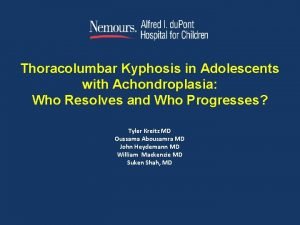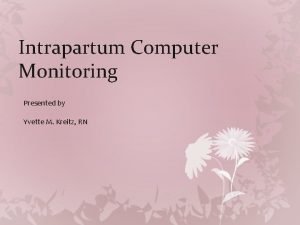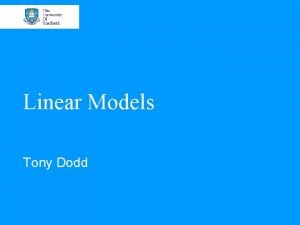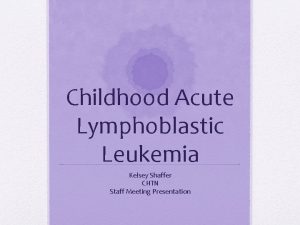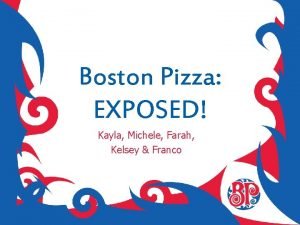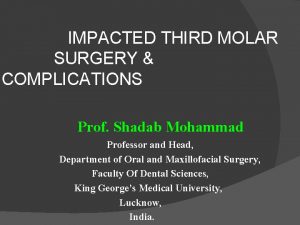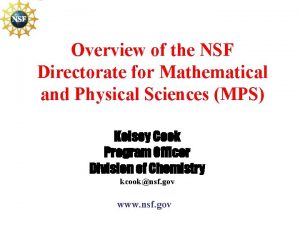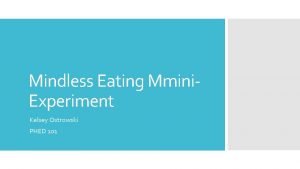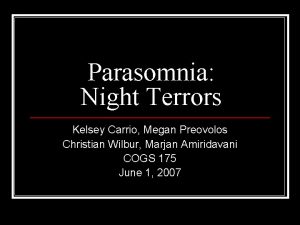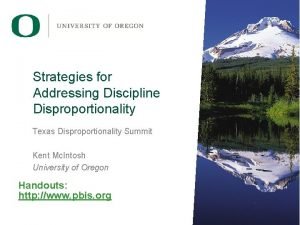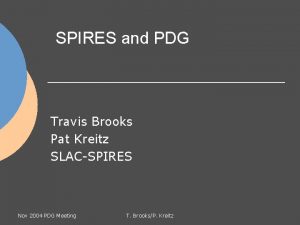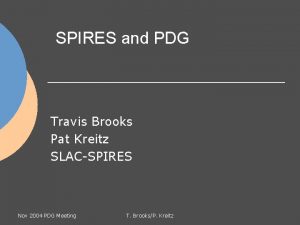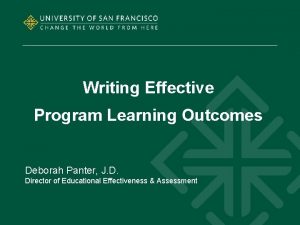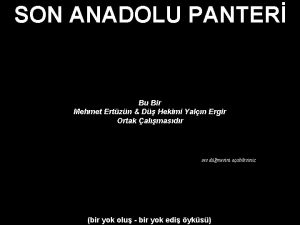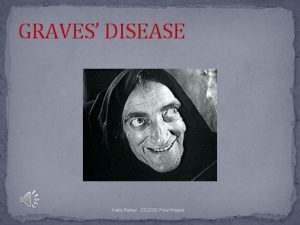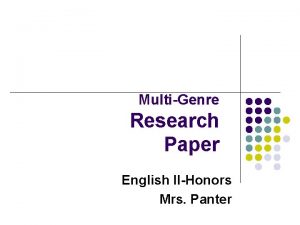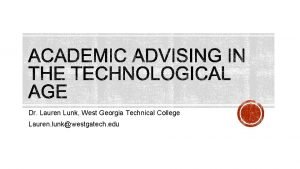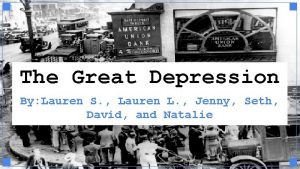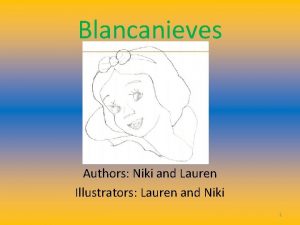Steven Dodd Christian Kreitz Lauren Landers Kelsey Panter



















- Slides: 19

Steven Dodd, Christian Kreitz, Lauren Landers, Kelsey Panter

Selective Attention • We usually focus our attention on one or a few tasks or events rather than many • “At any given moments, [people’s] awareness encompasses only a tiny proportion of the stimuli impinging on their sensory systems”. Hall Pashler (1998)

Selective Attention • How do psychologists study how people process information they do not attend to? • Dichotic listening task

Selective Attention: Filter Theories of Attention • Bottleneck Theories – Broadbent (1958) – Moray (1959) – Treisman (1960) – Wood and Cowan (1995)

Selective Attention: Filter Theories of Attention • Spotlight Approaches

Selective Attention: Filter Theories of Attention • Schema Theory – Neisser (1976) • Inattentional Blindness – Example: Door video – https: //www. youtube. com/watch? v=FWSx. SQsspi Q

What areas are active during attention? • Parietal lobe • Sensory neglect (damage to PL) – Ignore sensory information located in visual field opposite the damaged hemisphere

What areas are active during attention? • Frontal Lobe – Ability to select motor response – Develop plans

Networks of Visual Attention • Operational Network – Used when a person already has decided what to focus on – Ensures to-be-focused-upon stimulus receives the cognitive processing it needs – Distributed across frontal and parietal lobes

Other Networks • A separate network located in the frontal, parietal, and subcortical lobes controls attention • When you look at a board in the front of the class, you redirect your attention to a new stimulus • Brain areas appear also appear to be located in certain regions of the temporal lobe (Karnath, 2009)

How attention operates • Attention consists of several processes that operate independently • ADHD Study (Barkley, 1998) – Can be alert and devote mental resources to a task – Inability to inhibit an outgoing response • (talking while doing homework)

• Stroop https: //www. youtube. com/watch? v=xrow. WGi 20 b. M • Selective attention https: //www. youtube. com/watch? v=ub. NF 9 QNEQLA • https: //www. youtube. com/watch? v=l. Hd_L 7 dg 3 U 4 • https: //www. youtube. com/watch? v=FWSx. SQsspi. Q • Inattentional blindness https: //www. youtube. com/watch? v=v. JG 698 U 2 Mvo

The Stroop Task • When the ink color and word don’t match, participants find it difficult • Reading happens rapidly and easily for adults • Automatic • Stroop interference • Affects 2 nd-3 rd graders- age 60

AUTOMATIC VERSUS ATTENTIONAL (CONTROLLED) PROCESSING • Posner and Snyder (1975) – Automatic processing: (1) it must occur without intention (2) it must occur without involving conscious awareness (3) it must not interfere with other mental activity • Schneider and Shiffrin (1977) – Visual search task – Automatic processing: used for easy tasks and with familiar items; operates in parallel with other processes and does not strain capacity limitations – Controlled Processing: used for difficult tasks and ones that involve unfamiliar processes; usually operates serially (one set of info at a time), requires attention, is capacity limited, and is under conscious control.

FEATURE INTEGRATION THEORY • Developed by Treisman • We perceive objects in two distinct stages. – (1) preattentive, or automatic; we register features of objects (color or shape) – (2) attention allows us to “glue” the features together into a unified object • Illusory conjunctions: integration errors caused by “overload”

ATTENTIONAL CAPTURE • “Pop-out” phenomena in which certain stimuli seem to jump off the page or screen at the viewer, demanding attention • Theeuwes, Kramer, Hahn, and Irwin (1998) • Fukuda and Vogel (2011)

Dual-Task Performance • Alternating – Noticeable lag • Automatic – Clearly aware of the words being dictated • Combination – Generally accepted

The Attention Hypothesis of Automatization • Attention is needed during the practice phase of a task and determines what gets learned during practice • Attention affects what gets encoded • Consistency

Divided Attention Outside The Lab • Cell phone usage while driving – Radio usage – Cell phone usage • Passenger in the car
 Lauren landers
Lauren landers Tyler kreitz md
Tyler kreitz md Hill rom watchchild
Hill rom watchchild Tony dodd
Tony dodd Tempo panter
Tempo panter Jason panter
Jason panter Mrs landers
Mrs landers Landers earthquake
Landers earthquake What are musical messages written around the brand
What are musical messages written around the brand Kelsey carbonetta
Kelsey carbonetta Kelsey faber
Kelsey faber Kelsey shaffer
Kelsey shaffer Farah kelsey
Farah kelsey Kelsey fry technique
Kelsey fry technique Cirrhosis pes statement
Cirrhosis pes statement Kelsey cook nsf
Kelsey cook nsf Kelsey ostrowski
Kelsey ostrowski Kelsey carrio
Kelsey carrio Dr kelsey nosek
Dr kelsey nosek Kelsey bergman
Kelsey bergman

